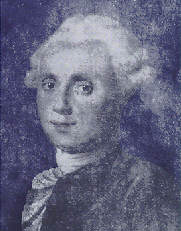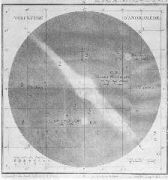
 |
|
Born:
26
Jun 1730; Badonvillier, Lorraine, France
Died:
12
Apr 1817; Paris
Messier was a French astronomer with a keen interest in comets. To organize his work, he prepared the Messier Catalog (1784) for which his name is now perpetuated in astronomy.
He was born the tenth child among twelve siblings. His father died when he was eleven. He began the study of astronomy early, for in 1744 he saw his first comet, and watched the 1748 annular solar eclipse.
He joined the Paris Observatory when 21 years old. As an assistant to Nicholas Delisle he became an accomplished astronomer with keen. He watched from 1758 for Halley's predicted return of the comet now carrying his name. Although it was spotted on 25 December 1858 by Johann Georg Palitzsch, Messier was the first person in France to find Halley's Comet.
Messier was hooked. He became an astute comet hunter, nick-named by King Louis XV as the "comet ferret". Some comets he co-discovered. His name is on twelve he independently discovered between 1760 and 1784.
 |
|
|
Crab Nebula |
|
 |
|
|
Andromeda Galaxy |
The reason Messier compiled his catalogue (1760-84) was to save time while comet hunting. A long time is taken for an astronomer to recognize a comet suspect. It requires checking for a sustained change in observed position in the sky. His telescope was a small instrument only a couple of inches inch diameter refractor, so even star clusters would look fuzzy like a comet. He recorded the non-moving objects - star clusters, nebulae and galaxies - so he could differentiate between prior object observations or a possible new comet. He made careful drawing of each, naming them M-objects followed by a catalog number, beginning with M1 indicating the Crab Nebula. He recorded a total of 103 entries.
 |
||
|
Messier's drawing (source) |
Ironically, the comets which so interested him are themselves unremarkable. However, the names he adopted for his catalog are still used by astronomers for identification. It contains some of the most beautiful objects in the sky.
He was elected to the Royal Society (1764), and later to the Paris Academy of Sciences (1770).
He lived through the the French Revolution that began in 1789 with the "Storming of the Bastille." On the night of 11 April 1817, Charles Messier passed away, age 87, at his home in Paris.
Based on historical notes, six additional objects were added to his list in the twentieth century,.
LINKS:
The Messier Pages with a long list of other links.
Charles Messier's Catalogue of Nebulae and Star Clusters.
Icon
index to Messier objects.